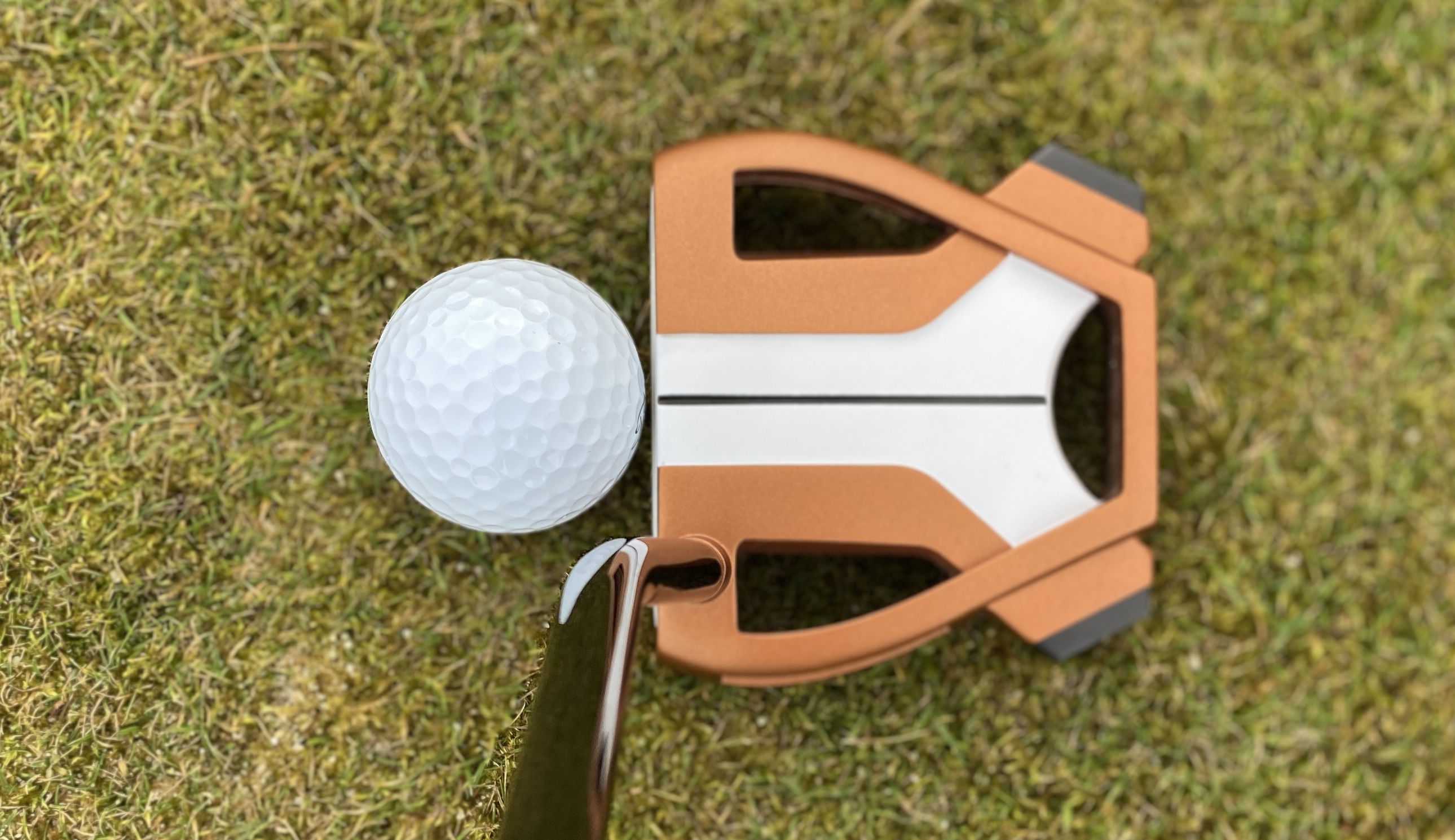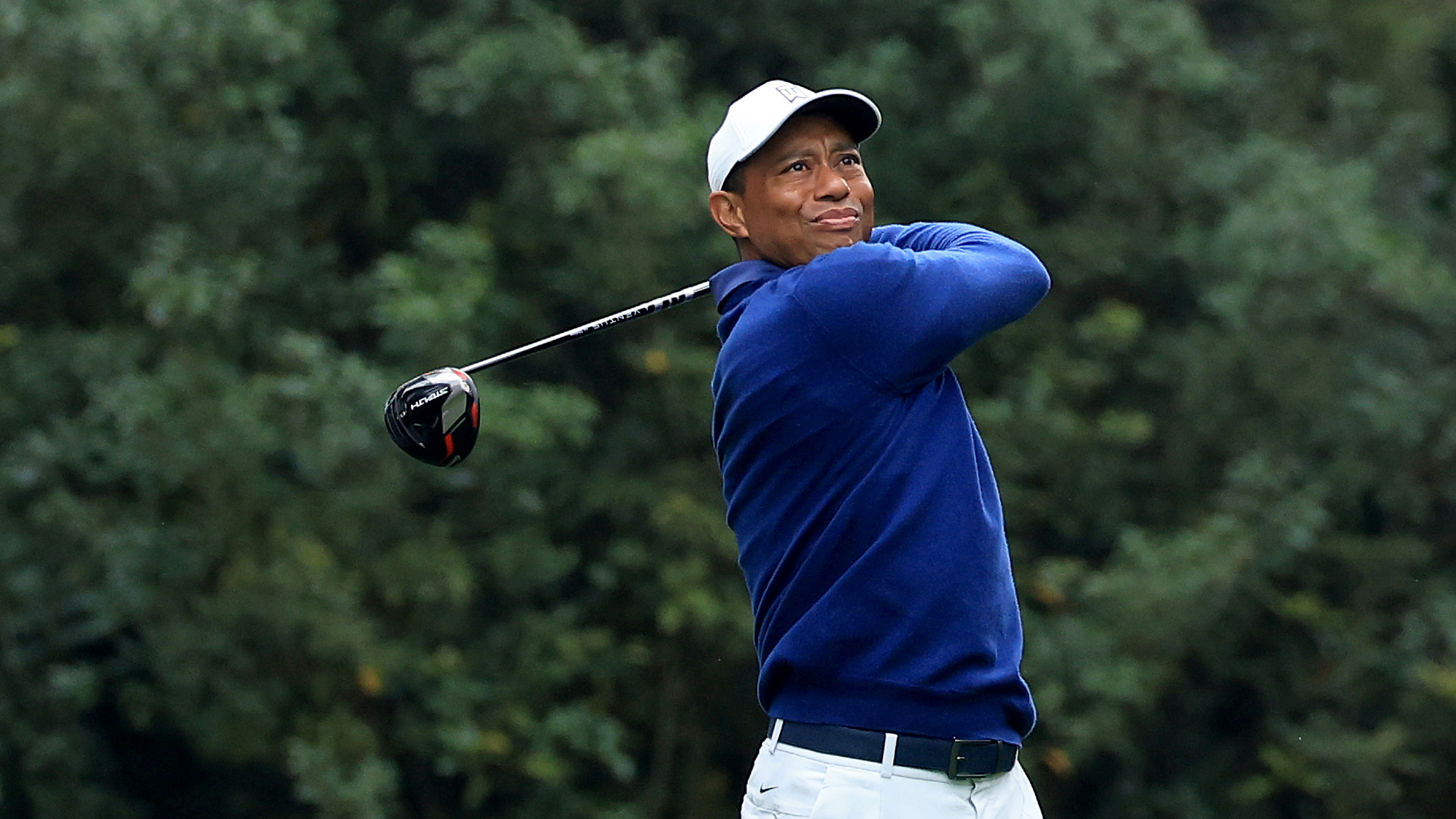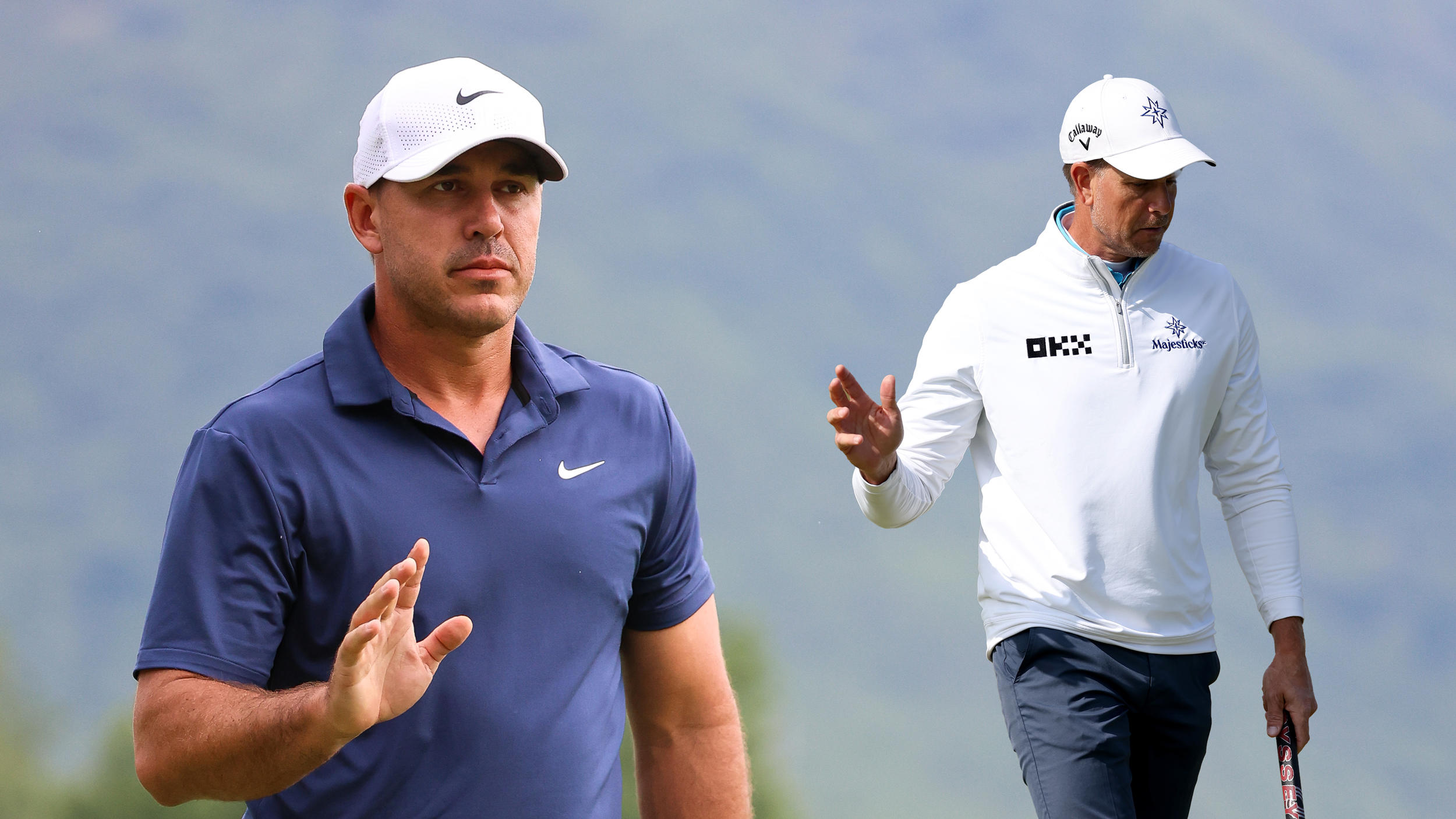I’ve Fitted Everyone From Tiger Woods To 30-handicappers... Here’s What You Can Learn
We sit down with TaylorMade club fitter Mark Thistleton to find out how innovation has shaped his role dialling in golfers of every ability and what you can learn from his vast experience

Mark Thistleton is on the road travelling for more weeks in a year at Tour events than he is at home fitting the world’s best players into TaylorMade products, which explains why he doesn’t visit his home club of Hayling Golf Club all too often. This is a great shame, because it’s an absolutely stunning layout along the Hampshire coastline with views of Portsmouth and the world beyond. Mark has a lot of history at Hayling GC - he was a greenkeeper there in his youth and during that time managed to shoot the course record of 63, which still stands today. Despite his lack of playing time these days, he maintains a handicap of +1 and so it was unsurprising to see him defeat us in a 7-hole match starting at the signature 12th hole. We spoke to him during and after the match about his career, the highlights, best products and what amateurs can learn from his experience fitting hundreds of golfers of every playing standard, from Tiger Woods all the way down to your typical weekend warrior.
You’ve been with TaylorMade fitting players since 2010, coming on for 15 years, how has your job evolved from what it was then to what it entails now?
TaylorMade has always been a kind of market leader in innovation. You'll see with the movable weights and the flight control technology moving on to increasing the carbon in the head and now the carbon faces. Overall it's incremental changes. If you were to change your clubs every year, you're not really noticing a huge jump forward. But if you were to look back at a club from four or five years ago, it looks quite old now and even working with it is a lot harder. I’ve got more weight to move about and play with now and that's huge as a fitter to be able to influence the ball flight a lot greater.
Does having more technology to play with make your job easier or harder?
It's like having a football team with lots of good players in a way. It's a good problem to have. I think you'd always rather have more options to play with than not because you can really kind of fine tune the fitting. But the elements of fitting is still the same now as it was any time. You're trying to make the golfer's job easier and more enjoyable or improve their game in some way, shape or form. So from a fitting perspective, it's better.
What have been some of the stand out products down the years from TaylorMade that really resonated with tour players?
TaylorMade has never really been known as a leader in the putter category until we came out with the Spider Putter. Originally we had that big Spider Tour back in the day that was a big leap forward and then the Spider X following on from that. I think the Spider X was the number one model on tour for three years running. So those are the products that really spring to mind for me.

When you're fitting tour players, what kind of things can you give them in terms of changes in performance and what kind of things can't you change?
So the biggest job we have as fitters is when we come out with a new product is getting them to instantly like the new product. We’re looking through the heads, setting them up and obviously it makes it easier with all the adjustments and the weights and the way we can change the lie angle on the sleeve now. I know Tommy Fleetwood likes it to sit this little bit upright, he likes the club a little bit shorter, this is how he likes it to sit on the ground, this is how he likes the face angle. And then really it's like an apples for apples test, you're testing, you know, last year's technology versus this year's technology.
Ball speed is always a big one with driver, it’s always the first number that everyone looks at. Is it quicker? But sometimes by getting the right launch spin and land angle characteristics, you can actually improve the distance with a driver, even if it's a mile or two per hour slower. But certainly people want to know, is it faster? And obviously where the technology is really being pushed and on the limits now and the fit comes down to an element of both distance and direction. It has to be better dispersion and in terms of ball speed, you might only see half a mile, a mile and a half of ball speed per year gains but that’s enough for a player to be converted usually as long as they have the same if not more control over where the ball is going.
When you introduced the carbon face drivers to the Tour players for the first time, which would have been last year in Stealth, were you seeing those sorts of ball speed gains?
Most guys were between a one and two miles an hour, some guys the same, but I would say 75-80 per cent of our guys were a little bit quicker, which is a huge for us. But it was more the off center hits where you're really seeing the ball speed levels maintain. We've seen a lot of drivers on Tour where the mishits drop six or seven miles an hour in ball speed. But since the carbon faces, I've seen that speed really maintaining on toe and heel hits with Stealth and especially on the Stealth 2 drivers. The average ball speed across the face is definitely faster, which seems to give everyone a net one to two miles an hour we were seeing with the Tour players.

I understand you've spent some time fitting the great Tiger Woods, just give us a sense about what that experience was like and maybe how it was different to fitting any other Tour player?
When I say good players know what they like to see and what they like to feel, I mean, he's the ultimate in that. Even just talking to other guys that know him, his knowledge of the game and what he likes and what he wants to see and why he wants to see it is just probably beyond most of the guys that do my job as well. So, you know you have to get that first product right. We actually built a couple of clubs for him at Royal Portrush in the Open 2019. He was looking for a two iron to do the job of his five wood. So we built up a couple of options there and then at Adare Manor last year, actually, we heard from Tiger's agent that he wanted to do three iron testing because he was coming into the Open and he wanted to find a good three iron.
Naturally there's a little bit element of nerves, I guess, because you're building for the greatest guy there is. But we back ourselves that we're going to build clubs to the proper spec. So it was just about building options, really. And then almost Tiger leads the fit, because he knows what he wants. So we built up four options with slightly different shafts, slightly different heads. He looks through them. Right I like this one. Hits it. No. Right, let me try this one. And it was almost like one shot, literally just one shot and then hand back or he’d then move on to hitting a low shot, a draw, a fade. Everything was done in the preparation just making sure that the prep was like down to the finest detail. Swing weight is zero tolerance. Length of club, how far the grip stretches down - the same, because you know he's going to pick you up on any of those little details.

How is the process different in terms of getting the average golfer optimized for their equipment?
It's different in the fact that Tour players obviously hit it a lot better. So it's easier because you see an instant result. So, you know, every little detail that I change about that golf club, you're getting feedback within two or three swings, whereas with the amateur golfer, obviously, sometimes you need to hit eight or nine shots before you build up a pattern of what that club's doing.The better the player, they lead the fit a little more because they know exactly what they want. They know what they're looking for. They know the kind of window of ball flight they want, whereas the more handicapped golfer is leaning on you, the fitter a little bit more to tell them what they need.
And when you start that fitting process with an amateur player, what are the biggest mistakes that you see them making in terms of the setup of their equipment?
It's mostly that there's still a little bit of an ego, people think they're a good player saying things like: ‘I should use a nine degree stiff shaft’ or ‘I’m good enough to use blades’ or whatever it might be. So there still seems to be a bit of a misconception of what you should be using. And I think there's so much equipment out there nowadays that makes golf easier that I really think guys should be leaning on that equipment. Hybrids spring to mind for me. I know it's well known that they're easier to hit than, say, a three and four iron, but there's still a lot of golfers with three and four or four and five irons in their bag, when hybrids replace two hybrids for a three, four, and five iron. And that's going to make golf a lot easier for a lot of people. And you've got room to add another club in there as well. So there's wedges that make life easier for you. Our Bigfoot wedge that makes getting out of sand just so easy.The P790 iron, something that looks great but is much, much easier to hit than a blade. So I think it's just more guys not opening themselves up to actually the game improvement technologies that are out there in modern day golf equipment.

Is it fair to say that the short game end of the bag is maybe an under-appreciated area when it comes to going through that custom fitting process?
It depends on the level of player. So for the better player, the more you maybe need to look at that area. The more you start looking at are they a shallow angle of attack? Are they steep? What type of course are they playing on? What kind of bounce on a wedge is going to work? For the higher handicapper, it’s probably more important to have the right kind of lofts of wedges in there to kind of fill all the shots that you need to play. So that would be more about kind of distance gapping. A club that gets you out of the sand, a club that hits it 60, 70 yards. A club that hits it 90, 100 yards. A club that hits it 110, 120 yards. So covering off all the yardages. So it'd be a little bit more simplified, and then the better you get you're trying to squeeze a bit more out of your game and you start looking a bit more in depth at how you attack the ball, how much spin you put on the ball, what kind of flight you want to see with wedges, as well as distance gapping too.
We know TaylorMade makes some excellent golf balls as well as clubs like the TP5, Tour Response and Soft Response. How much attention do you pay to what golf ball the amateurs are using and how does that affect the fit?
Golf ball is probably one of the first questions and one of the last things I'll say in a fitting. I want to know what kind of pool of golf ball are they playing - Is it soft? Is it spinny? Is it a firm, low spin, distance ball?Because that's really going to dictate the fit, it's always going to be in the back of my mind, I guess. Are they playing the best ball for their game? Are they a low spin player? Are they a high spin player? It’s just one of those things you have to consider throughout. Then at the end of the fitting, I would either confirm they’re playing the right ball or make a recommendation based on their swing characteristics. It's something that emerges as you go through the fit because you'll see patterns in their game and their shaping and their spin and what's important to them.

When you're fitting someone, there's an incredible amount of data out there. How useful is that when it comes to fitting a player and how do you go about using that data?
Yeah, there certainly is a lot of information out there. More information is generally good if it's used in the right way, but obviously a lot of the time I would say it's not. There's definitely an overuse of technology and information nowadays. I think back to working with Rory McIlroy, someone like that. He's very, very educated on his trackman numbers, his GCQuad numbers. So that's kind of okay, he knows what he's talking about and he hits enough golf shots with the information that he's got to know what's good and what's not. Whereas for some of the players that aren't really that knowledgeable, it can actually almost cause more problems, because you start looking at club data, which I still think is probably more of a coaching tool.
What you don't realize is you change one element, say you're looking to hit it more down, more down angle of attack, where then you're changing club path, you're changing strike, you're changing so many other elements that golfers don't always realize. I also think all the technology nowadays, there is a little bit of a loss of creativity with the golfer. The feel of the shot is lost a little bit in the modern day game with all the information we have, but everyone is striving to get better and squeeze that extra one or two percent out of them and I guess the technology does help highlight what areas you need to improve in your game.So it's useful in that sense.
Subscribe to the Golf Monthly newsletter to stay up to date with all the latest tour news, equipment news, reviews, head-to-heads and buyer’s guides from our team of experienced experts.
Articles created in partnership with TaylorMade.
-
 'Objectively Bad' Or 'Marginal Gains'? Rating LIV Golf's Winter Transfer Business
'Objectively Bad' Or 'Marginal Gains'? Rating LIV Golf's Winter Transfer BusinessLIV has signed seven brand-new players this off-season while making a number of other roster changes - but is the circuit in a stronger of weaker position now?
-
 Which Players Have Left LIV Golf Ahead Of The 2026 Season?
Which Players Have Left LIV Golf Ahead Of The 2026 Season?10 pros departed the PIF-backed circuit prior to the 2026 campaign - here is who they are and information surrounding the reason for their exit